
Welcome to the second in a series of blogs about the process of starting a Transition Enterprise. The bulk of this content will form a downloadable guide to starting a Transition Enterprise that will be available shortly. In the first blog we defined a Transition Enterprise and looked at the very early stages in the start-up “journey” – the big idea or opportunity. In this blog we will take that idea, develop it and then test it.
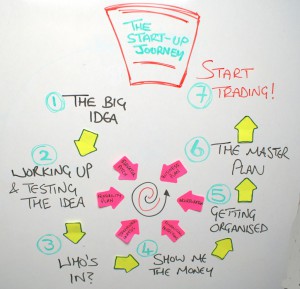 As you develop your idea, your commitment to it, and you need to start to engage with others, it is worth exploring and formalising a few things in a bit more detail. This stage in your journey is often called “Pre-start”. You will start to create things that you can share with others; maybe a Facebook page or a formal project overview or a “Project Initiation Document”. You may even produce a marketing plan or feasibility study, in order to demonstrate to yourself and to others that your enterprise is workable and worthy of further work and support.
As you develop your idea, your commitment to it, and you need to start to engage with others, it is worth exploring and formalising a few things in a bit more detail. This stage in your journey is often called “Pre-start”. You will start to create things that you can share with others; maybe a Facebook page or a formal project overview or a “Project Initiation Document”. You may even produce a marketing plan or feasibility study, in order to demonstrate to yourself and to others that your enterprise is workable and worthy of further work and support.
The key things to explore at this stage are as follows…
Working up the idea – Your vision, motivation and commitment
Why are you doing this and what do you want to achieve? People will want to know. A formal statement of this it will go on to become the Objects of any organisation that you create. It’s always good, if you are working as part of a group, to explore your common vision to check whether you are all paddling in the same direction or maybe some of you need to build another canoe, albeit one that will have a similar journey.
There are many ways techniques around developing a common vision. Many of the most popular follow a process like this:
The group establishes a common understanding of where they are now and why they are here.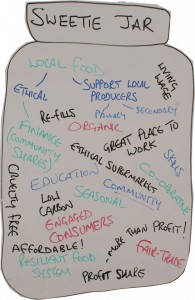
- The group members, imagine what the successful creation of the enterprise will look like at some point in the future.
- A facilitator records (normally on a flipchart) the different outcomes, to create a sort of “sweetie jar” of possible outcomes. At this stage nothing is considered as unrealistic.
- The group then take a more structured view of the current reality, often using a SWOT analysis – recording the:
- Strengths and Weaknesses of the group (internal factors)
- Opportunities and Threats to the enterprise (external factors)
- Using the SWOT analysis as a reality check, the group then draw up a list of achievable outcomes that are consistent with each other, that everyone is happy with and that they will commit to. It is often at this point that difficult conversations around the motivations of those involved will be useful.
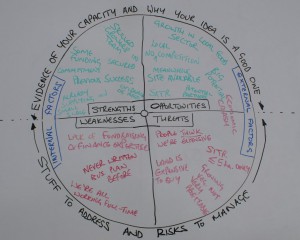 If you are a group, you should now have a shared commitment to what you intend to do, why you are doing it and a knowledge of some of the challenges that you will face on the way. If you are on your own, you still have the same information, but a bigger workload. The next stage is to test the viability of the various different options you have to deliver your enterprise idea.
If you are a group, you should now have a shared commitment to what you intend to do, why you are doing it and a knowledge of some of the challenges that you will face on the way. If you are on your own, you still have the same information, but a bigger workload. The next stage is to test the viability of the various different options you have to deliver your enterprise idea.
Testing the idea – Your business model
As you are planning to start an enterprise, you need to ensure that there is a viable trade involved. If all you are planning to do is campaign for a change, or own a community asset in trust and not actually deliver a product or service, then that’s fine, but it’s maybe not an enterprise. Equally, trading in order to create social change, or safeguard an asset, is fine too, but we do need to take the enterprise part seriously.
In exploring your business model, you should work towards answering the following questions:
- What is your product or service?
- How you are going to deliver it?
- Why will people want it?
- Who else is already doing it?
- As you are intending to be a Transition Enterprise – how are you addressing the regenerative or ecologically sustainable element of our enterprise? This will form part of your Unique Selling Point or USP.
- How much do you sell your product or service for? Getting this wrong and selling too cheap is one of the main reasons for start-up failure.
- How much of your product or service do you need to sell to “break even”?
- And, importantly, do you have everything you need to deliver it?
The process of gathering the information needed to answer the questions above is known as “market research” and the presentation of it is known as a “marketing plan”.
At this stage you can also start to collect information relating to possible premises, equipment, suppliers, staff requirements etc and start to budget for how much money you’ll actually need upfront to get started.
Marketing people often refer to all of this as the “Marketing Mix” or “the 4 P’s”:
Product (or Service) Price Place Promotion
or putting the right product, at the right price, in the right place at the right time.
Key outputs
- The Elevator Pitch or Project Overview
It’s a good idea to develop your idea into a short document which quickly and clearly lets people know what you’re doing and how they can engage with you. This will later develop into the Executive Summary of your Business Plan. This overview should include:
A description of what you are going to do and why you are doing it. This information will be related to your vision and commitment from above and will often form the “Objects” of whichever legal structure you go on to create.
- The Marketing Plan
A thorough exploration of your product or service, who might want it, how much they’re prepared to pay and how you are going to deliver it. The marketing plan is focussed on your products or services. There are many free marketing plan templates available on-line.
- A Feasibility Study
This is report pulling together all your research and evaluation, including the information in your marketing plan. It will be evidence as to whether the enterprise as a whole is viable and feasible and give a rough idea of the figures in terms of money needed to start, pricing of your product or service, turnover needed to break even and overheads. It may also consider possible sites and premises and potential sources of finance.
The key purpose of this exercise is to let you know whether it is worth proceeding and committing more resources to your project. It will also provide much of the information that you will later include in your Business Plan.
Next Steps – At the and of this stage, you have three choices:
- Just stop as maybe the figures don’t add up or, on reflection, you don’t have the time, skills or energy to proceed.
- Go back and redesign the enterprise (change the model, costs, products etc.) so that it becomes feasible.
- Carry on; the idea and enterprise look realistic and achievable. At this stage you are in an ideal position to engage with an advisor who can help you work up your idea further, engage with funders and create the enterprise.
In the next blog, we will take a step back explore who is involved in your enterprise and how they are involved.
Pitfalls and common errors
The most common error at this stage is to ignore it or skip over it, getting bogged down in the fine detail of structures and finance without having a clear idea of what you will actually do. This is the equivalent of starting to build a house without proper foundations – it will cause problems later on.
Another common mistake at this point is getting carried away with the great thing that you want to achieve without starting to explore whether others share that passion and are willing to trade with you and make your enterprise idea viable.
Take home message: Do not skip the market research.
Who can help?
Whilst the bulk of business support available to Transition Enterprise, is aimed at organisations that are past this point, there is often support available for this pre-start phase. This support recognises that money spent at this early stage will ensure much more effective use of any finance and funding later. For organisations developing social enterprises, there is an ever-changing variety of grant funds available, some of which can fund a professional advisor to work with you. Here is an overview of funds and other finance options.
There are loads of free business related resources avaialble on-line. One useful site is BusinessBalls.com
If you are a lone entrepreneur then there are a variety of organisations who can support you to develop your ideas and capacity, including:
UnLtd who have numerous funds aimed at budding social entrepreneurs to develop and explore their enterprise ideas; and
The School for Social Entrepreneurs, who support individuals who are starting & growing social enterprises and community organisations through their action-learning courses
There are also various trusts that fund personal development, such as:
CLORE Social Leadership programme who fund their fellows to develop into “leaders with a social purpose so that they can transform their communities, organisations and the world around them.”
Blog author: Mark Simmonds is a co-operative and community enterprise development worker, currently working with the Reconomy project as Enterprise Advisor. Mark has supported many new and existing Transition Enterprises
If you are starting, or considering starting, a Transition Enterprise and you have any questions, then why not email me? If I can’t help you then it’s highly likely that I’ll know someone who can. mark@culture.coop
This REconomy Project work is generously supported by the Friends Provident Foundation.


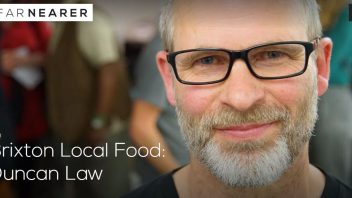


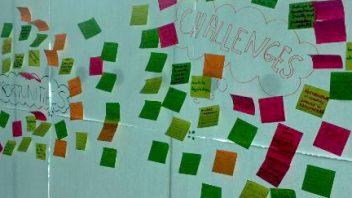


Connect